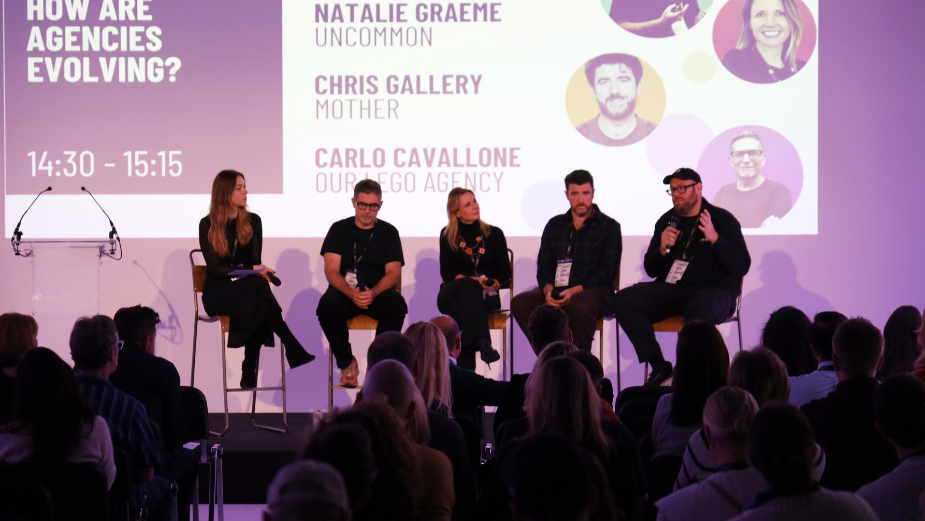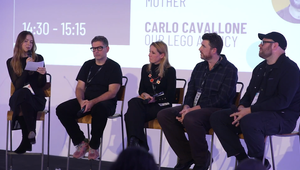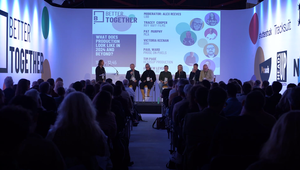
New Challenges, New Opportunities: What Do Agencies Look Like Today?

“The only constant is change,” said Natalie Graeme, the co-founder of Uncommon Creative Studio, with a knowing smile while discussing what’s next for agencies at LBB’s Better Together event last week during a panel titled, ‘How Are Agencies Evolving?’
Natalie was joined by Chris Gallery, head of strategy at Mother, and in-house representation from Carlo Cavallone, VP of creative at Our LEGO Agency (OLA), the LEGO Group, and Matt Watson, executive creative director at PepsiCo’s Sips & Bites. Together they discussed the state of the modern agency today, the necessary evolution every one is undergoing, and the continued need to know who you are amid rapid market changes.
It’s no secret that agencies have had to work harder, smarter, and with less budget for a while now, shape-shifting capabilities and adapting to client needs while navigating a steady trend of brands launching in-house agencies.
A sense of identity
Chris, Carlo, and Natalie impressed upon the audience that agencies today can’t afford to not know who they are and what they stand for, highlighting how this steady sense of self has been central to their agencies, even while they have branched into unexpected territories.
At Uncommon, this certainty has allowed the team to explore design, feature films, and even architecture; at Mother, this looks like being a coherent family of agencies with an advertising core to offer ‘nose to tail’ brand building that reflects modern client needs; while OLA’s recent moves included a LEGO feature film with Pharell Williams and even a gallery launch in Paris. It’s not about doing everything but it’s certainly about doing more than one thing, and really well. “Small groups of people can do massive things. You don’t need to have a presence everywhere,” said Chris.
“Know where you stand,” added Matt. “Protect your POV, what you stand for, and what you don’t. Don’t say yes to everything because you need to add value. Know what you are and stick close to it.”
And the strong sense of self also comes in handy through the mergers and acquisitions that have defined the agency landscape in the last few years. Uncommon, which was independent until 2023, knows this well. “When you scale and add capabilities, you have to think about why you exist and why you deserve to as the market is oversaturated and undefined,” Natalie said.
Playing nicely
The nature of the market means that competition is an inevitable and a necessary force that creates innovation and shapes agencies. Instead of viewing it as a kind of necessary evil, all our panellists agreed that there is more than enough work to go around and that specialisms mean there’s need for all. Carlo said there was “merit in both indies and holding companies, let’s keep the space open for both,” with Matt adding that “we weren’t made to work in competition, but alongside each other. It’s about bringing creative excellence into the heart of the business, which brings with it cost savings and efficiency.”
“We have to realise that there’s a bigger pie. We’re all aiming for something bigger and we don’t need to squabble over a small bit of it,” said Natalie.
Playing nicely is a base level for Chris who stated, “If we want to do something great, we all need each other.” Chris’ position on the panel was unique in that he was the sole voice representing the independent angle of the industry. Though in places like the US and Australia, independent agencies have a strong foothold, the UK is trailing a little behind. It’s not something Chris is personally aware of, with Mother recently launching another indie agency, of which he said: “There’s more than enough business for the independents and more talent all the time who want to work at an indie.”
Playing nicely wasn’t reserved just for fellow agencies – it goes right across to media too, something LBB has recently investigated and termed a ‘conscious recoupling’ of media and creative. It’s something Natalie is seeing at Uncommon, driven by a need for efficiency. “Working hand in glove with media agencies provides invaluable expertise around communications planning. It’s happening a lot more and more pitches looking at both at same time.
Matt is likewise seeing this ‘recoupling’ at Sips & Bites, welcoming it with open arms. “It allows us to move quicker and bring more interesting, diverse media choices,” he added.
Meeting new challenges with new capabilities
All the panellists acknowledged that there are a lot of challenges facing them, and the market, right now. This calls for agile ways of thinking and applications of creativity.
Sips & Bites is tackling the challenges head on by “moving into a horizontal way of thinking about brands,” which Matt said is a “constant brief to answer every day of week.” He added that ‘big idea’ thinking isn’t enough anymore and instead it’s about “looking at trends and culture and how brands can get involved rather than focus on the one big Christmas or summer campaign.”
For Carlo and OLA, this period is defined by a feeling of creative freedom and he said the agency “doesn’t feel stifled, it’s an exciting time.” He added, “We’re launching products every week. The LEGO Group is a constant machine of fun opportunities.”
Natalie said that finding the right solutions means being a lot more collaborative across teams and less of a “let’s just give it to the creatives” attitude. There’s also a lot more “data, strategy, and comms planning which all has to work with creative,” she explained.
Another big shift agency-wide is the amount of freelancers working in the industry. Covid was the catalyst and a fair few have chosen to remain freelance as a result. Carlo said that he saw this as a positive: “Freelancers and external partners are important for an outside perspective, since working inside the company can make you too businessy. It’s good to have disruptive, interesting, outside perspectives.” Chris had a more balanced view and offered that when clients come to Mother, they’re “buying into us as a brand though, so we need to balance it and we need to be consistent” with the talent that’s onboard.
Both a challenge and an opportunity converge in the availability of AI and its applications. For Chris, the efficiencies are undoubtedly a benefit while Carlo says the OLA is being cautious. Matt echoed these sentiments and said, “We’re also cautious and learning. We use it as a BTS tool to speed up some processes to help us be as agile as possible and solve as many problems as possible because we’re not a big team. It has a role in what we do and we’re excited to see where it goes.”
On the subject of AI and creativity, Natalie wasn’t worried. “It levels the playing field. All the output is of a certain standard in that it looks like it was made on Midjourney. We do need to examine it more and see how we can apply our talent to it.”
A big thanks to our sponsors
Shutterstock | Park Village | Peach | NaF | Heads Up Production | Tracksuit



















